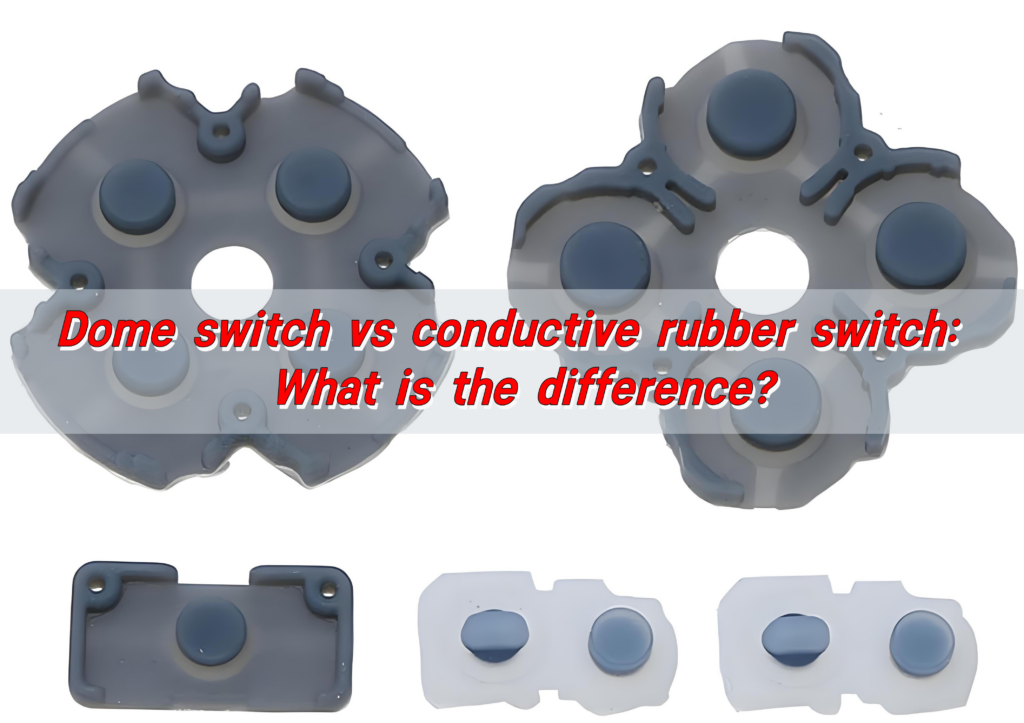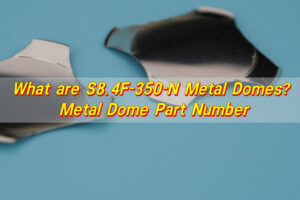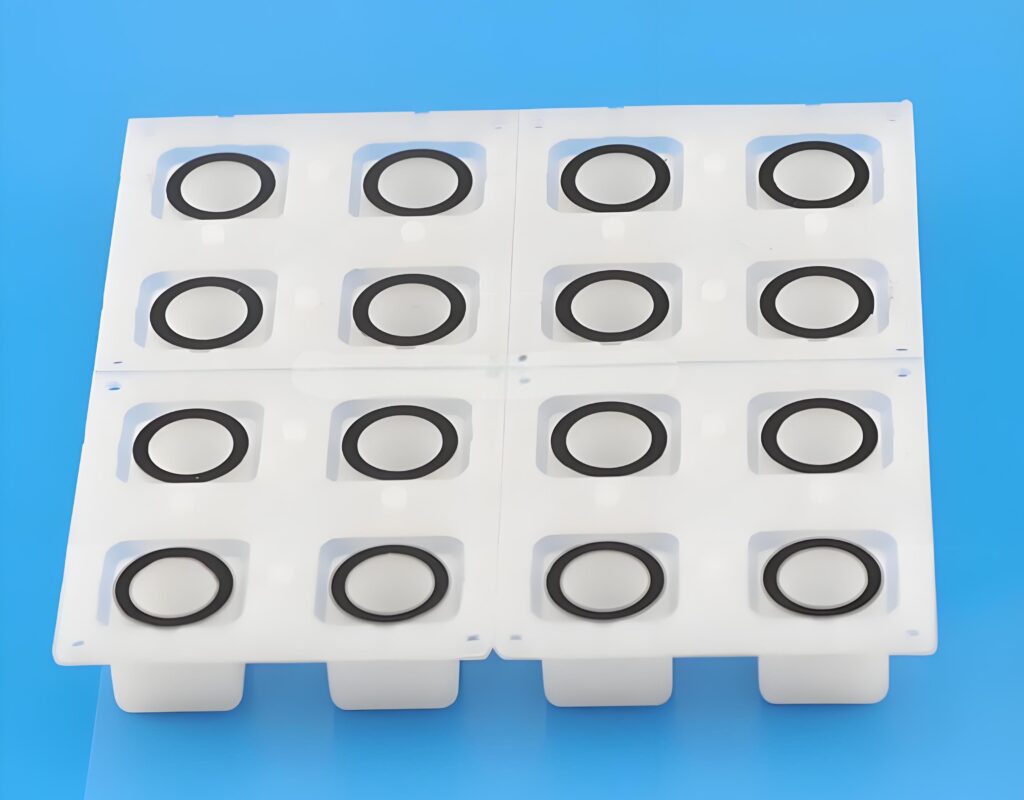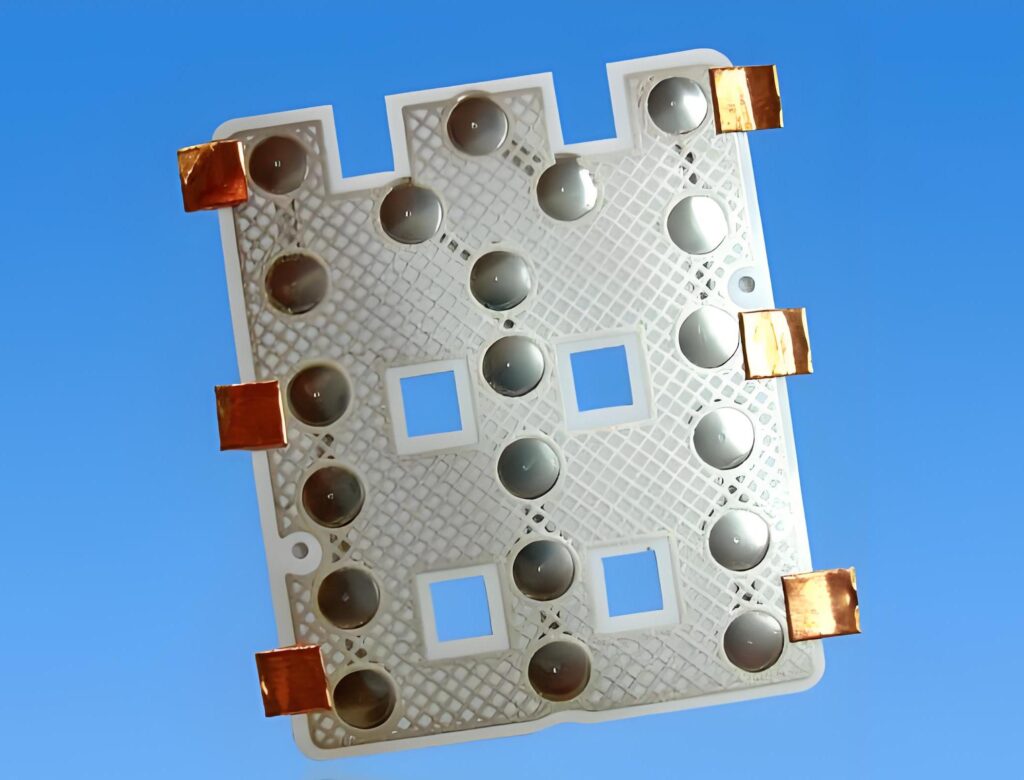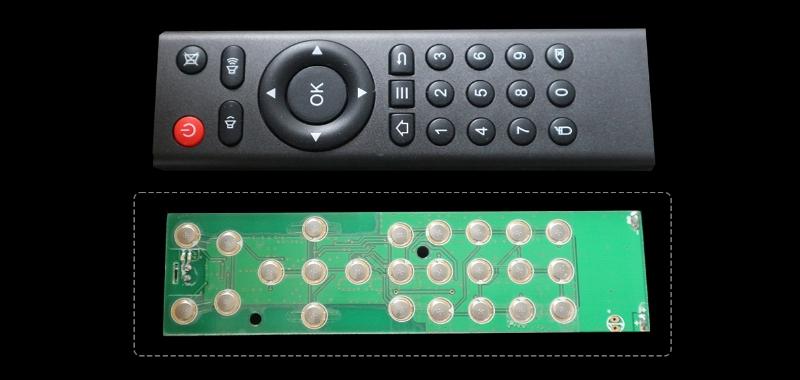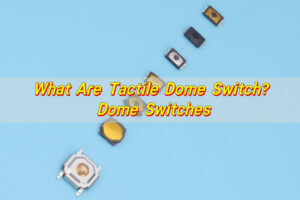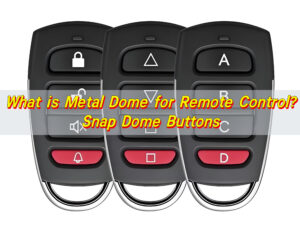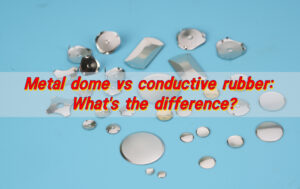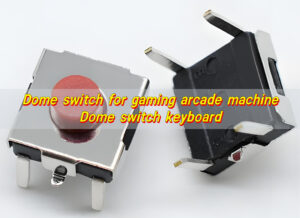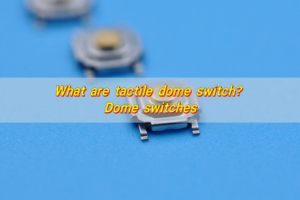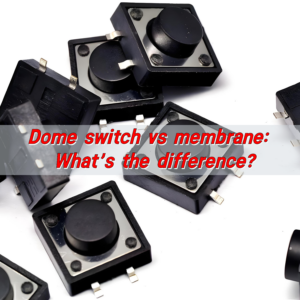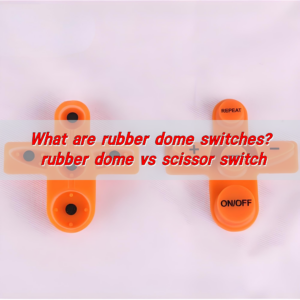Dome switch vs conductive rubber? Dome switches and conductive rubber switches each have their own characteristics. Dome switches use metal dome to make contacts, which have low contact resistance, low operating force and a crisp feel. They are often used in electronic products that have high requirements for contact resistance and feel. Conductive rubber switches use conductive rubber to conduct electricity, which has relatively large contact resistance, soft feel but low durability, and are suitable for scenarios with frequent pressing.
What is a dome switch?
Dome switch is a type of switch that uses a metal dome to complete the circuit when pressed. When you press the key, the metal dome collapses, touches the underlying circuit, and sends a signal. Once you release the key, the dome springs back to its original shape.
These switches are typically used in membrane keyboards, industrial control panels, and consumer electronics. They are known for their crisp tactile response and sharp clicking feel. Unlike older mechanical switches, dome switches combine simplicity with a modern, slim design.
What is a conductive rubber switch?
Conductive rubber switch, often called a rubber dome switch, is built differently. It uses a flexible silicone rubber with carbon or conductive particles. When the user presses the rubber pad, the conductive portion touches the circuit board underneath, closing the circuit and sending the signal.
These switches are quiet and soft. That’s why you’ll find them in TV remotes, calculators, and medical equipment. They work smoothly and are cheaper to produce, especially in high volumes.
The feel of a rubber dome switch is more cushioned than a metal dome. You won’t get the same “click,” but you will get a gentle, silent press. This makes them perfect for situations where noise needs to be minimized.
Which is better: dome switch or conductive rubber?
It depends on what matters most to you.
If you need high feedback, excellent reliability, and a satisfying feel, go with a dome switch. It gives a quick, snappy response. This can be especially useful in professional or industrial environments where accuracy matters.
On the other hand, if cost and quiet operation are more important, the conductive rubber switch may be your answer. It offers a more subdued feel but still gets the job done.
Each switch type has its strengths. But when it comes to user experience and long-term performance, the dome switch often takes the lead.
Which switch gives better tactile feedback?
Without a doubt, the dome switch wins here. Its design ensures a sharp, defined click every time you press it. That feedback helps users know immediately that their input has registered.
For devices where precision is key, this tactile feedback is essential. Think of medical devices, industrial machines, or any tool used in fast-paced environments.
Conductive rubber switches feel softer and smoother. Some people enjoy that. But if you want a bold, clicky response — the dome switch delivers.
Which key switches are the quietest?
Silence has its own value. And in this category, conductive rubber switches shine.
Because they’re made of flexible rubber, they absorb sound. There’s no metal-on-metal contact. That’s why remotes, toys, and many home appliances use them.
Dome switches, while more tactile, do produce more sound. That “click” is useful but not always welcome in shared or quiet spaces.
If you’re designing for a noise-sensitive setting, rubber dome switches are the better choice. They’re smooth, gentle, and nearly silent.
Is a dome switch more durable than a rubber dome?
Metal domes are built to last. Many can endure over 1 million presses without wearing out. That kind of endurance makes them ideal for keypads, machinery, or public-use devices.
Conductive rubber switches, while still reliable, tend to wear out faster. Over time, the rubber can lose elasticity. The carbon contacts can wear down. Eventually, you get less response — or none at all.
If you’re aiming for long life and consistent performance, the dome switch offers the edge. It resists fatigue better, handles rough use, and stays consistent for years.
How do conductive rubber switches work?
Conductive rubber switch is built with a molded rubber keypad. At the bottom of each rubber dome is a carbon or conductive pad. Underneath this is the printed circuit board.
When you press the key, the rubber collapses. This makes the carbon pad touch the circuit board, closing the loop and sending the signal. Once released, the rubber bounces back into place.
It’s a simple yet smart system. These switches are affordable, easy to produce, and highly customizable. You can shape the rubber to fit almost any layout, from keypads to remote controls.
However, since the rubber relies on its own elasticity, it may degrade faster over time compared to metal domes.
Where is a dome switch used?
They appear in:
- Industrial control panels
- Medical equipment
- Point-of-sale machines
- Handheld scanners
- Remote controls for specialized devices
- Military-grade electronics
- Fitness equipment
They’re also used in high-end consumer products where reliability matters more than cost. Their solid feel makes users trust the device they’re using.
Conclusion:
Choosing between a dome switch and a conductive rubber switch isn’t just about materials — it’s about user experience, longevity, and reliability.
Go for a dome switch if you need speed, accuracy, and tactile assurance. Go with a conductive rubber switch if you’re looking for silence, softness, and cost-efficiency.
If you’re unsure or need guidance, our team is here to help. We specialize in crafting high-performance metal dome solutions for every need. Contact us at sales@metal-domes.com


